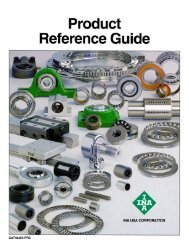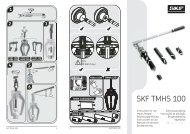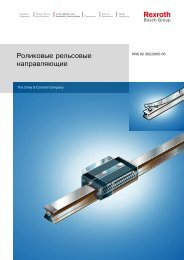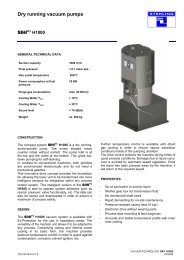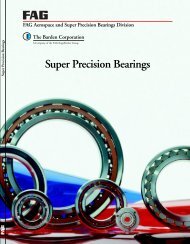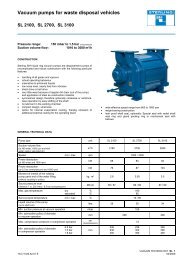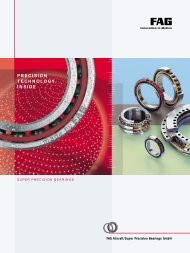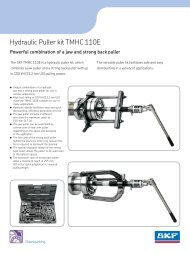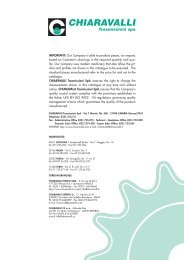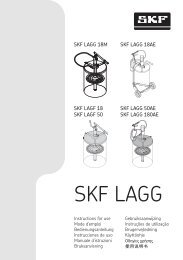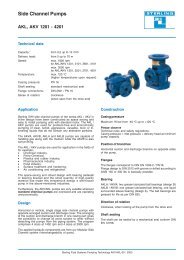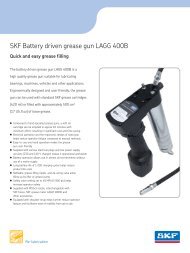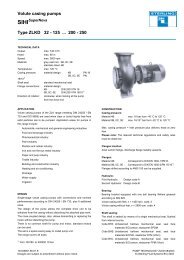High Precision Ball Bearings - Kraftmek
High Precision Ball Bearings - Kraftmek
High Precision Ball Bearings - Kraftmek
You also want an ePaper? Increase the reach of your titles
YUMPU automatically turns print PDFs into web optimized ePapers that Google loves.
Form and running accuracy<br />
Low vibration level and high running accuracy are ensured<br />
by random sample production control on the rings and<br />
the balls. Form accuracy and surface finish are checked<br />
by using advanced precision measuring instruments,<br />
the runouts of assembled bearings are checked 100%.<br />
Apart from highly advanced manufacturing machines<br />
constant production control ensures the uniform quality<br />
of GMN high precision ball bearings.<br />
Sophisticated measuring systems and quality assurance<br />
methods ensure a high degree of accuracy, low friction,<br />
a high degree of quiet running, highest speeds and a<br />
long service life.<br />
Vibration<br />
The vibration level depends, among other things, on:<br />
• Form accuracy and surface finish of raceways and<br />
balls<br />
• Cage design<br />
• Cleanliness and method of lubrication<br />
<strong>Ball</strong> pass frequency f AR on the outer ring<br />
Z<br />
f AR = · f i ·<br />
2<br />
<strong>Ball</strong> pass frequency f iR on the inner ring<br />
Z<br />
f iR = · f i ·<br />
2<br />
D<br />
1 – W<br />
cos <br />
T 0 [1/sec]<br />
D<br />
1 + W<br />
cos <br />
T 0 [1/sec]<br />
A 100% vibration test is carried out with all GMN high<br />
precision ball bearings. The spectral analysis carried out<br />
regularly by taking random samples gives information<br />
on the inner and outer ring as well as ball form accuracy.<br />
The vibration spectrum of a ball bearing is essentially<br />
discreet, the dominating frequencies are design related.<br />
The specific frequencies of a bearing can be calculated<br />
with the aid of the formulae shown opposite.<br />
<strong>Ball</strong> spin frequency f w<br />
f<br />
f w = i T D<br />
· – W<br />
cos 2 <br />
2 T<br />
0 [1/sec]<br />
D W<br />
Cage rotation frequency f K<br />
f<br />
f K = i D<br />
· 1 – W<br />
cos <br />
2 T 0 [1/sec]<br />
f i<br />
= Shaft frequency 1/sec<br />
D w<br />
= <strong>Ball</strong> diameter in mm<br />
T = Pitch diameter in mm<br />
Z = Number of balls<br />
0<br />
= Contact angle<br />
…about the product<br />
19



